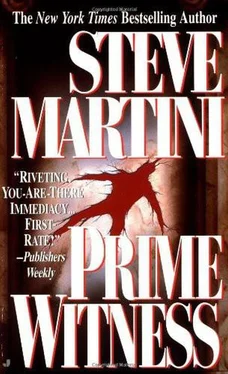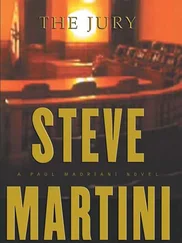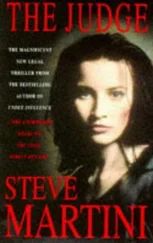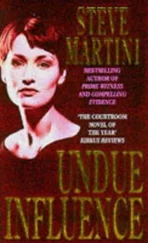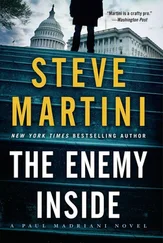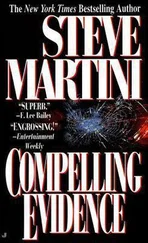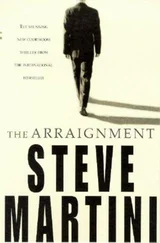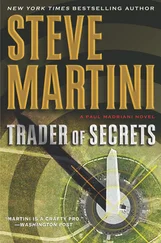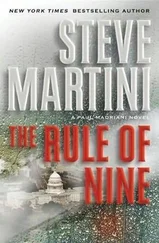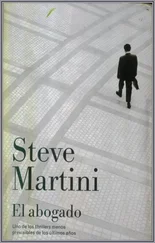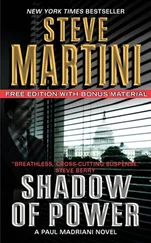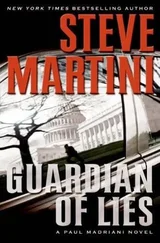Steve Martini - Prime Witness
Здесь есть возможность читать онлайн «Steve Martini - Prime Witness» весь текст электронной книги совершенно бесплатно (целиком полную версию без сокращений). В некоторых случаях можно слушать аудио, скачать через торрент в формате fb2 и присутствует краткое содержание. Год выпуска: 1992, ISBN: 1992, Издательство: Jove, Жанр: Триллер, на английском языке. Описание произведения, (предисловие) а так же отзывы посетителей доступны на портале библиотеки ЛибКат.
- Название:Prime Witness
- Автор:
- Издательство:Jove
- Жанр:
- Год:1992
- ISBN:9780515112641
- Рейтинг книги:5 / 5. Голосов: 1
-
Избранное:Добавить в избранное
- Отзывы:
-
Ваша оценка:
- 100
- 1
- 2
- 3
- 4
- 5
Prime Witness: краткое содержание, описание и аннотация
Предлагаем к чтению аннотацию, описание, краткое содержание или предисловие (зависит от того, что написал сам автор книги «Prime Witness»). Если вы не нашли необходимую информацию о книге — напишите в комментариях, мы постараемся отыскать её.
Prime Witness — читать онлайн бесплатно полную книгу (весь текст) целиком
Ниже представлен текст книги, разбитый по страницам. Система сохранения места последней прочитанной страницы, позволяет с удобством читать онлайн бесплатно книгу «Prime Witness», без необходимости каждый раз заново искать на чём Вы остановились. Поставьте закладку, и сможете в любой момент перейти на страницу, на которой закончили чтение.
Интервал:
Закладка:
Three more turns, down a short hallway, we enter a larger room, and she slows to half speed. I sense that we have arrived.
The place is not unlike a high school chemistry lab in one of the upscale suburbs. Bathed in fluorescent light are a dozen large stainless steel tables bolted to the floor.
“Has Lieutenant Dusalt given you much detail so far?” she asks.
“We’ve had one meeting,” I tell her. “What I know so far is what I read in the papers, and the few files that Mario-Mr. Feretti-compiled before his death.”
“You want to ask questions, or should I do a narrative?” she asks.
Not having read the file, I’d rather listen. I tell her so.
“Fine.” Not looking at any notes she wings it, impromptu. “The killer usually doesn’t leave ID’s, wallets and purses. He takes them. Except for the last murders, we’ve never found any of them. He probably has a shrine somewhere, someplace where they’re all piled up. We’ve had to roll prints each time to identify the victims.”
She moves toward a big chalk board, one of those things supported on a rolling wooden easel. She flips the board to the other side. Here the surface is cork. Pinned to it is an array of glossy colored pictures. Faces, head and shoulder shots of death, taken against the stainless steel autopsy tables of the county morgue.
“The first one was nineteen-Jonathan Snider.” She points. Even in death this face has the artless countenance of youth.
“His girlfriend was eighteen. Her name was Julie Park.” From her picture she was Asian, young and pretty. “They were found on the Putah Creek twelve days ago. The killer made no attempt to conceal the bodies.”
She moves down with her pointer. “The next two were found four days later. Sharon Collins, twenty-two, Acosta’s niece, and Rodney Slate, same age. Again no ID’s. The bodies were left exposed on the ground.”
She points to the next faces of death, more aged this time, staring out at me from the cork board. “The last two you saw at the scene, Abbott and Karen Scofield.”
The woman’s head reveals a dark forlorn cavern on one side of her face, the grotesque image of an empty eye socket, several sharp cuts on the cheek and brow around the vacant cavity.
“For some reason he left their wallets and her purse. Maybe something disturbed him, we don’t know. Scofield and his wife were divorced. He was a member of the faculty at the university, a scientist. Ornithology, I believe.” For the first time, she is looking at notes.
I make a face, like this is Greek to me.
“Study of birds,” she says.
She approaches one of the tables, this one heaped with clothing. It might be anyone’s laundry, except for the large blotches of dried blood on the white shirt and trousers in one of the piles. These are sorted on separate areas of the table, ready for placement in large paper bags numbered and marked for identification, part of the budding chain of evidence.
I notice that the buttons are all missing from the dress shirt. She tells me she cut these off at the crime scene and bagged them for evidence. They have gone down to latent prints, to be smoked in a chamber of heated super glue. It’s a long shot but maybe the killer got careless and touched one of the buttons without gloves.
If the local politicos are worried about a botched crime scene, in Kay Sellig they have been smiled on by the gods of good fortune.
Sellig tells me that the stains on the victims’ clothes were caused by gravity, blood flowing along the ground to the neatly folded articles of clothing placed around the bodies. There are no cuts or tears in any of these items, no evidence of any physical altercation.
“The pattern is always the same,” she says. “The victims are always naked when killed.”
They have found one other piece of evidence. At the first murder scene police believe the killer may have inadvertently left a large plastic trash bag, the kind used to line trash containers. It was found near the creek, probably carried by the wind. It was empty, but a hole had been poked in the bottom. Sellig thinks this may have been used by the killer to carry the stakes and cord, the implements of death. She thinks one of the stakes may be responsible for the hole.
She has not had time to examine the stakes and the cord from the Scofield killings. The cord appears to be similar to that used in the other murders. The stakes are downstairs in latent prints.
“Any evidence of sexual assault?” I ask.
“Not that we can find,” she says. “Medical examiner found sperm in the vaginal vault of the Park girl, but whoever left it there was a secretor, and the blood type matches her boyfriend. Pubic combings turned up some foreign hair on the boy that matches the girl’s.” She pauses for a second to let the obvious settle on me.
“Kids on the campus say the two were an item. We’re thinking the victims got it on together, maybe an hour or two before they were killed.”
“How does he do couples?” I ask. “A little risky, isn’t it?”
“He’s probably armed, he may have help, we’re not sure yet. The victims were all taken from deserted areas, abandoned parking lots late at night. In every case they were the last ones to leave some social function, or a workplace. The killings were done in remote areas, except for the last one. The last one, the Scofield thing, was gutsy,” she says. “He got a little close to the road.” She speculates that this may be part of his growing MO, an unmet desire for added chance. “But he was also lucky,” she tells me. “We’re looking for motorists who might have passed that spot late at night, people who might have seen something. So far we’ve come up with nothing.”
She tells me that the profile experts, psychologists who make their life’s work the study of demented minds, have, despite the lack of any evidence of sexual assault, not ruled out the possibility that the crimes might be driven by a sexual psychosis.
“Some of them think the metal tent stakes are phallic,” she says. “According to this theory, what he does with them may be his own sick form of intercourse.”
They already have a psychological profile of the killer. There was a time when I would have given this all the credence of tarot cards. But I have become a believer.
“Except for the last two, he doesn’t know his victims,” she says. They have deduced this from the fact that the faces of the victims were untouched, not battered or mutilated. Psychologists have determined that it is usually only in cases where the killer knows his victim that the face is battered. The closer the relationship, the more severe is the facial disfigurement.
“You say except for the last two. What’s different there?”
“I’ll get to that,” she says.
“He’s probably white,” she says. Statistics show that in mutilation murders the victim is most often of the same race as the killer.
They gauge the age at between twenty-five and forty. Teenagers who kill are usually violent and impulsive, not the measured ritual of the Putah Creek killer. And anyone too old would have had his hands full with the male victims.
According to the profile the killer probably lives alone. This is almost a “touchy-feely” surmise, I think. But the shrinks reason that the killings evidence signs of alienation-the murderer sees himself as an outsider, not part of any family group or close social setting. This may account for the fact that he always takes couples, his way of lashing back.
“We think he’s spent a lot of time around the creek, he might live near there, or maybe he worked there in the past,” she says.
They have come to this conclusion based on the ritual nature of the crimes; the meticulous arrangement of the bodies on the ground, the careful array of clothing around the victims all indicate that the killer was taking his time, confident that he would not be disturbed.
Читать дальшеИнтервал:
Закладка:
Похожие книги на «Prime Witness»
Представляем Вашему вниманию похожие книги на «Prime Witness» списком для выбора. Мы отобрали схожую по названию и смыслу литературу в надежде предоставить читателям больше вариантов отыскать новые, интересные, ещё непрочитанные произведения.
Обсуждение, отзывы о книге «Prime Witness» и просто собственные мнения читателей. Оставьте ваши комментарии, напишите, что Вы думаете о произведении, его смысле или главных героях. Укажите что конкретно понравилось, а что нет, и почему Вы так считаете.
